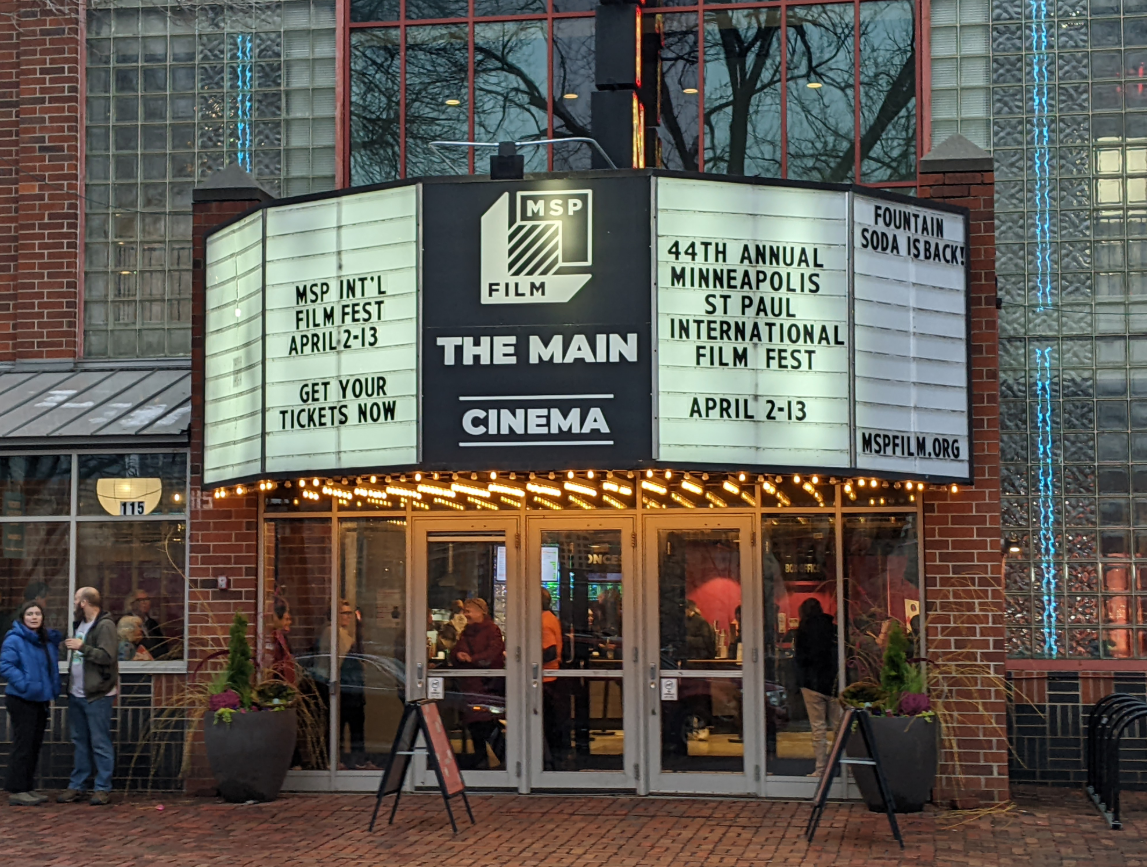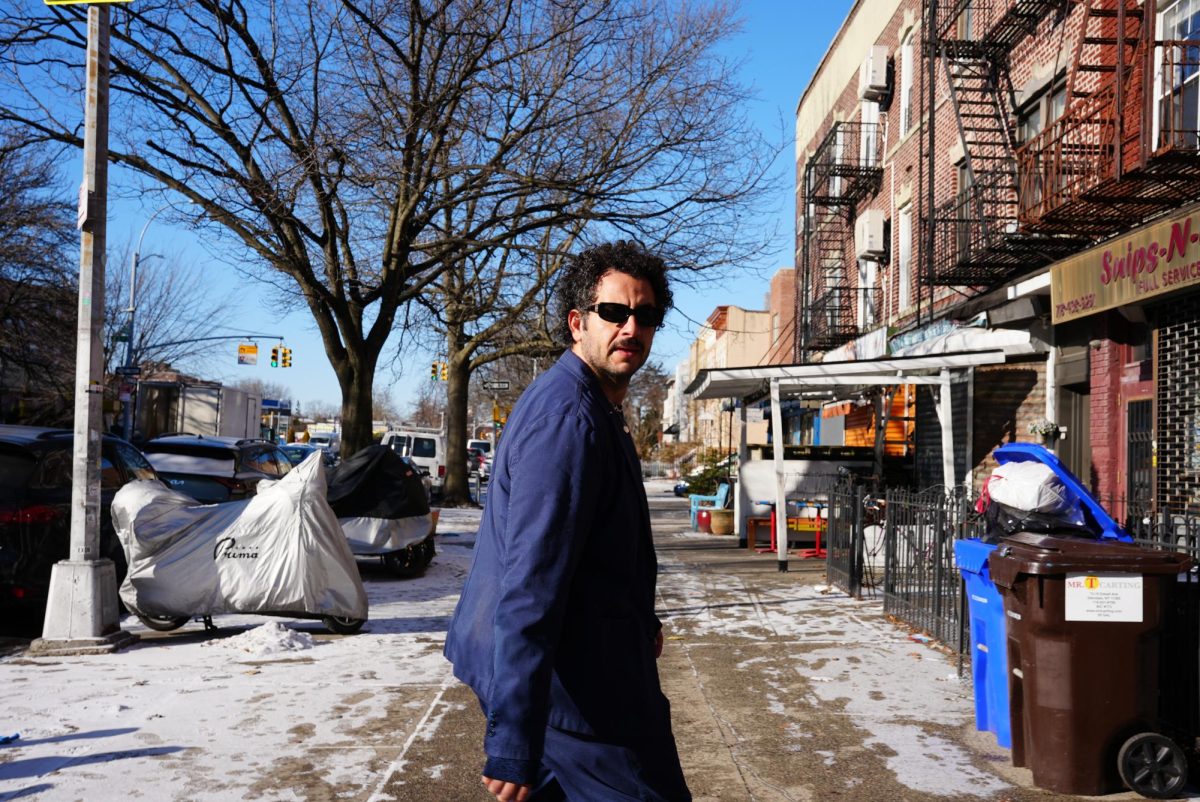For the sleepy family audience filing out of a late screening of Jerry Bruckheimer’s swashbuckling blockbuster cheese “Pirates of the Caribbean 2,” stumbling upon a seven-foot tall transvestite lounging around the theatre lobby clad only in strategically placed fur and purple leather may have been a bit alarming.
Also shocking, perhaps, were the gaggles of wide-eyed “virgins” shaking in their garters as the more venerable “sluts” hand them condoms and trace red lipstick Vs on their foreheads. Or maybe even a beaming senior citizen couple or two, plain in appearance but armed with high hopes of reliving their glitter-encrusted youths.
“It’s always interesting to watch people’s expressions as they exit the earlier movies and see us,” said Samantha Lofgern, the security manager for Riverview Theater’s fortnightly midnight showings of “The Rocky Horror Picture Show.”
She is speaking, of course, of the fabulously made-up men, women and, Ö whatever, creatures of the midnight motion picture anxious to succumb to their guilty pleasures and escape to the most salaciously sinful world a $5 cover can afford. When the clock strikes 12, the theater will finally be theirs for the take over and the “Rocky Horror” reels ready to roll.
“There is something unique about refusing an early showing. Midnight movies give you that chance to be someone you’re usually not from nine to five,” said Lofgern. “It’s when all the freaks come out to play.”
The first wave of midnight movie fever began in the 1950s, when television stations across the United States took to airing low-budget films as late-night programming. It wasn’t until the 1970s that an actual cinematic phenomenon came about, first in the cheap, hideaway theaters of urban areas like New York City, and eventually across the country.
One of modern cinema’s best examples is “Donnie Darko,” a twisted tale of a schizophrenic boy who learns of the impending apocalypse from a rabbit-beast only he can see. “Darko” was a box office failure, but gained rabid underground following through its numerous midnight screenings. Hollywood took note of the increase in popularity, gave it a re-release, and watched “Darko” blossom into a mainstream hit.
Despite its occasionally campy histrionics, the midnight movie has nevertheless grown into a definitive symbol of cultural opposition. Movies like “Rocky Horror,” which cost roughly $1 million to make but went on to rake in $135 million from midnight screenings alone, are given the chance at a second life even if they were first grossly misunderstood (or seen as just plain awful) at the time of their initial releases. Whether for their underrated artistic merit, or simply for their sheer ridiculousness, the time slot allowed for a new set of fans and their radical means of showing appreciation.
So radical, it seems, that Riverview has tightened the rules on what audience members can and cannot bring in, toss and squirt. According to assistant manager Nathan Smith, notorious “Rocky Horror” antics like throwing buttered toast and large quantities of rice at the screen are no longer allowed because of the messes they make. People are allowed small water guns if they behave, but larger, Super Soaker types have been banned. Food and drink also demand regulation – those with outside eats have them confiscated, while the obviously intoxicated will be shipped off to detox.
“Things can definitely get out of control,” Lofgern added. “I’ve certainly never had to scream ‘No sex in the theater!’ at any of my other security gigs!”
On the other hand, some area theaters choose a more subdued approach to their midnight cinema, striving more for nostalgic, not shock, value.
The Uptown Theatre, one of the Twin Cities’ last few surviving single-screen movie houses alongside Riverview, showcases a wide variety of films. Mike Macblane-Meyer, the theater’s manager and one of the creative forces behind its successful Midnight Madness program, will gladly show anything from “Fight Club” to “Pretty in Pink.” Still, one consistent goal remains – to remind audiences how it feels to be affected by a little movie in a big way.
“One of my favorite midnight screenings was when we did ‘Harold and Maude,’ ” he said, referring to the 1971 cult film about a May-December bond between a death-obsessed young man and an impulsive elderly woman.
“We had people, even younger teenagers, coming out of the theater with tears in their eyes, totally moved. That kind of thing is just fantastic.”
To Macblane-Meyer, the late-night time slot makes all the difference. “In our homogenized society, there is that overwhelming desire for a change of routine and the excitement of an adventure,” he said. “Going to the cinema at midnight can be that adventure.”
What a midnight movie ultimately provides is the alternative film-lover’s brethren, a deliciously evil twin counterculture to the hullabaloo around stuffy, Oscar-type flicks where it’s just fine to shamelessly adore what others never seemed to understand.
“Sure, it’s something to do on a Saturday night if you’ve got no other plans,” said “Rocky Horror” regular Matthew Waters. “But it’s mostly about the great community surrounding it.”
Macblane-Meyer echoes Waters’ sentiments. “Our primary audience is made up of people who could care less about Hollywood hype,” he said. “They don’t want to see what they’re supposed to. They come to see what they love, without having to worry about the next Tom Cruise vehicle.”
After all, cult can’t be cult without, quite simply, a cult. Diana McCleery, a leader of the Twin Cities’ “Rocky Horror” cast Transvestite Soup responsible for Riverview’s pre-show activities, praises the decadent, uninhibited variety of a midnight movie crowd most of all. “The gamers, the goths, the geeks, the glam – through these films, they all intersect perfectly at midnight,” she said. Plus, she adds with a laugh, audience participation is the most important part because, without it, films like “Rocky Horror” are “actually just really crappy.”







